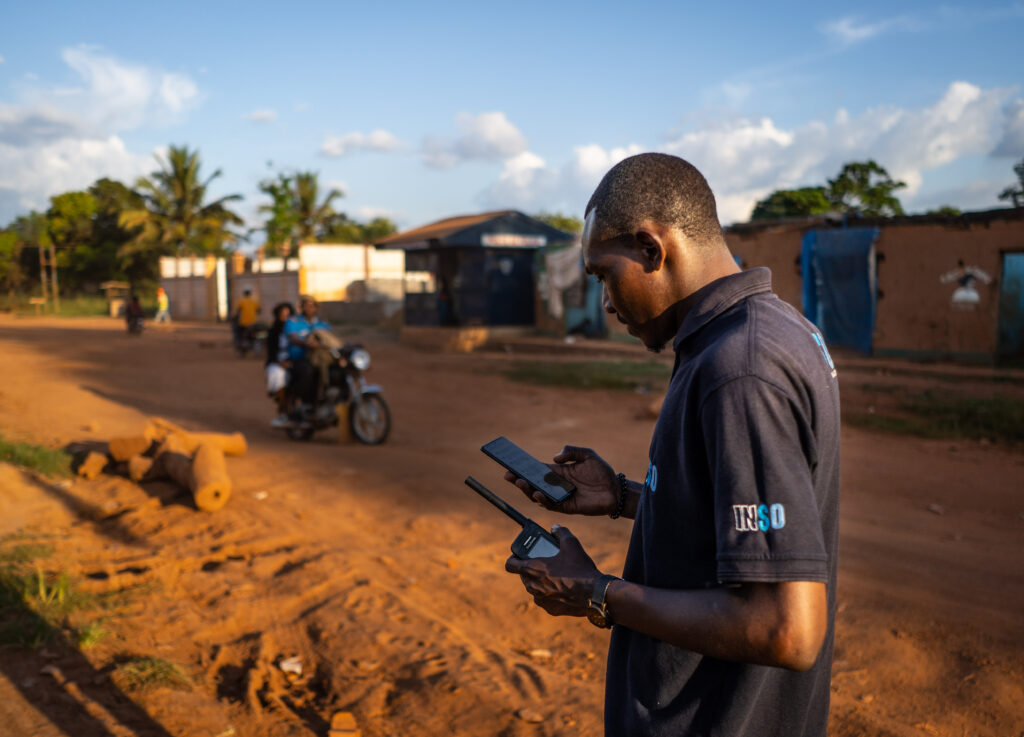To reach people in need, NGOs must oftentimes work in dangerous environments. We cannot stop the violence, but we can support NGOs to stay and deliver aid safely. One of the ways we do this is by collecting and analysing the risks impacting NGOs and then providing real-time advice to NGOs in the field through our operational alerts, roundtable meetings, and emergency coordination.
The highest serious incident category affecting NGO workers is abductions. We work to mitigate this through real-time communication of heightened abduction risks, free training for NGO Staff, which includes HEIST, Travel Safety, and Personal Safety courses, and evidence-driven analysis to help inform NGO security policies.
Aid Worker Abduction Report
Our 2023 NGO Abductions Snapshot report analyses INSO data from across 16 high-risk countries where INSO has a field presence, providing an overview of abductions based on region, perpetrating actor, and motivation, alongside recommendations and contexts to watch for 2024. You can read the full report here.
In 2023 INSO recorded 60 abduction incidents affecting 146 NGO staff across 15 countries. This is a decrease from the 191 NGO staff abducted in 2022. Of all abduction incidents, 35% were related to National NGOs, and 12% were directly related to NGO programming, with an equal percentage within that affecting national and international NGOs.
In previous years, the Sahel region has seen a steady increase in abduction numbers, especially following a dramatic rise in 2021 and 2022. Although the Sahel region experienced a high number of incidents, the frequency of abductions decreased in 2023, including in Mali and Burkina Faso. This trend seems to correlate more with the reduction in humanitarian operations in the area rather than an improvement in the overall situation.
Central Africa
Central Africa, particularly the Democratic Republic of Congo (DRC), remains a hotspot, accounting for nearly 31% of all reported abduction incidents. Whilst material gain by Organised Armed Groups (OAGs) and criminal actors is the primary motivation for many abductions in the DRC, there are cases of NGO workers being abducted as reprisals against programming objectives. For example, an NGO staff member was abducted and later killed over their involvement in a human rights assessment and reporting work in August 2023. Whilst OAGs rarely deliberately target NGO staff because of ideological opposition, there are exceptions to this, notably with Islamic State West Africa Province (ISWAP) and Jama’atu Ahlis Sunna Lidda’adati wal-Jihad (JAS) in northeast Nigeria and the Lake Chad region. There have also been increasing incidents of OAGs in Cameroon engaging in short-term abductions of NGO staff to exert influence, punish perceived opposition, and enforce anti-government lockdown orders.
When looking at the actor breakdown of NGO worker abductions, OAGs were responsible for 59% of all abduction cases. Despite being the predominant actor, the number of abductions by OAGs declined in 2023, across all INSO contexts, except for in Cameroon and the DRC.
Organised Criminal Groups
When looking at Organised Criminal Groups (OCGs), they only pose a direct threat to NGO Safety and Access in one context: Haiti.
“There has been a notable increase in abduction incidents by OCGs throughout 2023, and although there’s limited evidence to suggest that aid workers are deliberately targeted due to their work, the persistent and often indiscriminate nature of OCG-perpetrated kidnappings result in high collateral impact,” says INSO’s Analysis and Research team.
Towards 2024
In terms of what contexts to keep an eye on throughout 2024, we highlight five countries in the Sahel and Central Africa regions, including Mali, Haiti, the DRC, Cameroon, and Burkina Faso, where we perceive the threat to be the highest. NGOs should incorporate incident monitoring and analysis into their security plans and establish clear no-go zones for staff where there is a higher risk. INSOs Conflict & Humanitarian Data Centre (CHDC), our standardised incident database, is freely available to all INSO partners and can be used as a strong foundation to inform NGOs’ security risk management plans.
All data in this report can be found by partners through the CHDC, and all INSO global reports can be read here.
INSO is grateful for the support of its donors: The European Commission (ECHO), USAID’s Bureau for Humanitarian Assistance, the Swiss Agency for Development and Cooperation, the United Kingdom’s Foreign, Commonwealth & Development Office, the German Ministry of Foreign Affairs, the Ministry of Foreign Affairs of the Netherlands, Global Affairs Canada, Royal Ministry of Foreign Affairs of Norway, United Nations’ Office for the Coordination of Humanitarian Affairs (OCHA), Le Gouvernement du Grand-Duché du Luxembourg, the Swedish International Development Agency (Sida) and the French Ministry of Foreign Affairs (CDCS).

